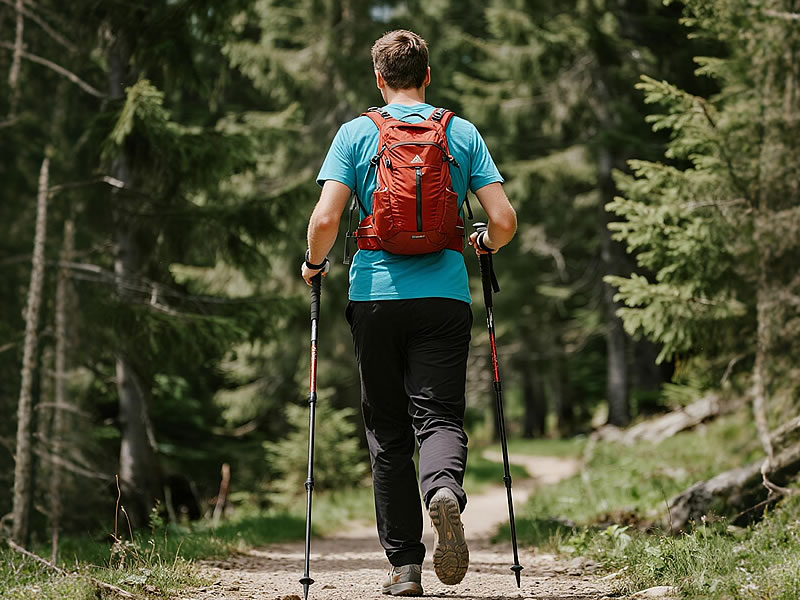How to walk naturally with trekking poles?
Trekking poles shouldn’t feel like awkward appendages. When used correctly, they become seamless extensions of your body, enhancing balance, reducing fatigue, and syncing with your innate gait. Here’s how to transform clunky movements into fluid motion:

The Core Principle: Replicate Your Natural Arm Swing
Your body already knows this rhythm: when your right foot steps forward, your left arm swings ahead. Poles amplify this natural contralateral pattern.
Key Techniques:
- Opposite Arm/Leg CoordinationPlant the left pole as your right foot steps forward (and vice versa).Match pole tempo to your stride—no rushing or dragging.
- Elbow Angle & GripMaintain a 90–110-degree elbow bend for shock absorption.Grip handles lightly; tension in shoulders/forearms means you’re over-pushing.
- Master the Strap TransferSlide hands up through straps → rest straps on wrist bones → grip handles loosely.Push down through the strap, not your palm. This transfers weight to bones, not skin, improving efficiency and preventing blisters.
Terrain-Specific Adjustments
| Terrain | Pole Technique | Body Posture |
|---|---|---|
| Flat Ground | Light taps; poles swing like relaxed pendulums | Upright, relaxed shoulders |
| Ascents | Shorten poles 5–10 cm; plant poles behind you for propulsion | Lean slightly forward from ankles |
| Descents | Lengthen poles 5–10 cm; plant tips ahead of feet for stability | Keep torso over hips; bend knees |
| Rocky Trails | Shorter poles; precise beside-rock placements (never between!) | Lower center of gravity |
Avoid These Common Mistakes
- ❌ "Double Planting": Stabbing both poles simultaneously (except for steep descents).
- ❌ Dragging Poles: Creates tripping hazards and disrupts rhythm.
- ❌ Over-Gripping: Squeezing handles → fatigue + blisters.
- ❌ Stiff Arms: Locked elbows increase joint strain.
Drills to Practice Natural Movement
- Grass Test: Hike barefoot on soft grass. Notice your arm swing. Replicate this with poles.
- Eyes-Up Challenge: If you stare at your poles, you’re overthinking. Focus 15 feet ahead.
- Silent Poles: Aim for quiet pole plants—excessive clacking means forced contact.
Why Natural Pole Walking Wins
- 25–30% reduced impact on knees during descents (University of Salzburg study).
- 15% energy savings on ascents by engaging upper body.
- Enhanced stability on uneven terrain, preventing falls.
Pro Tip: Adjust pole length frequently! Shorten for climbs, lengthen for descents, and customize for technical sections.






